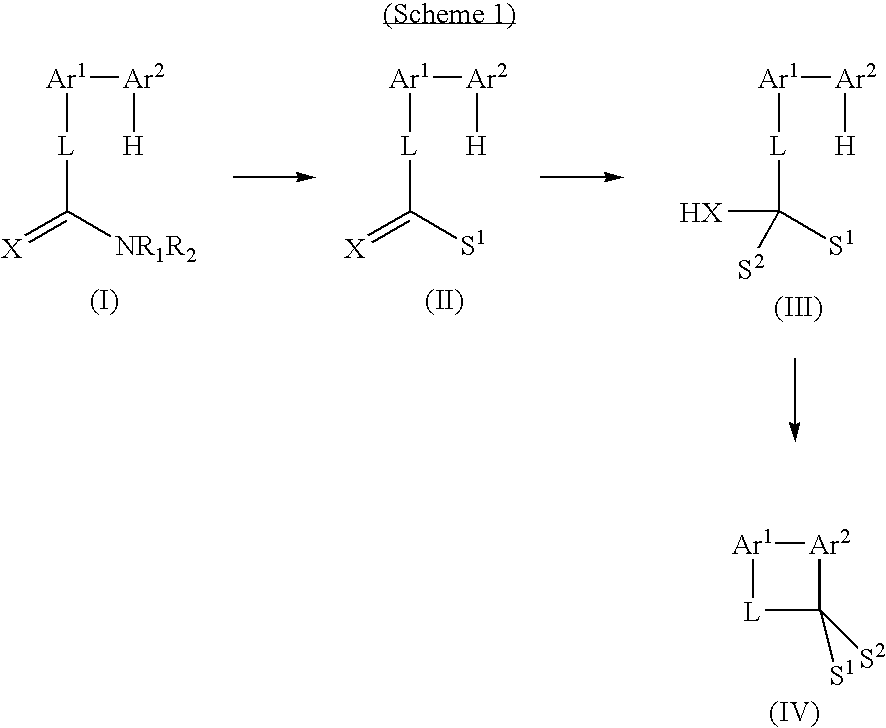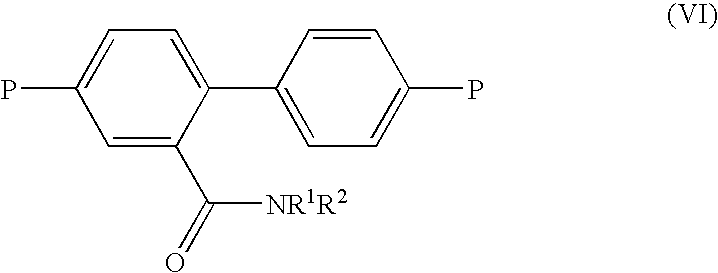Method for the prodution of monomers useful in the manufacture of semiconductive polymers
a monomer and polymer technology, applied in the field of new monomer synthesis, can solve the problems of residual starting material, difficult separation from other products, etc., and achieve the effects of improving solubility, morphology, and flexibility
- Summary
- Abstract
- Description
- Claims
- Application Information
AI Technical Summary
Benefits of technology
Problems solved by technology
Method used
Image
Examples
examples
2-(N-methyl-N-methoxyamido)-4,4′-dibromobiphenyl
[0105]
[0106] NMR uses a Varian 400 MHz system, using CDCl3 (unless indicated otherwise) with a TMS standard.
(1) 2,7-Dibromofluorenone
[0107] To a 3 L round bottom flask, equipped with reflux condenser, off-gas scrubber, mechanical stirrer and nitrogen bubbler was added fluorenone (100.006 g, 0.555 mol), phosphorus pentoxide (110.148 g, 0.776 mol) and trimethylphosphite (1200 mL). Under mechanical stirring, a solution of bromine (63 mL, 1.23 mol) in trimethylphosphite (200 mL) was quickly added. This clear solution was then heated for 22 hours at 120° C. The mixture was allowed to cool to room temperature, then poured into 3 L of water. When sodium thiosulfate was added (50.045 g) the mixture turned yellow. Stirring was maintained for 1 hour, then the yellow solid was filtered. This solid was heated in methanol to remove the mono-brominated compound and gave 176.183 g (98% pure by HPLC, 94% yield).
[0108]1H NMR (CDCl3) 7.73 (2H, d, J2...
PUM
| Property | Measurement | Unit |
|---|---|---|
| temperature | aaaaa | aaaaa |
| temperature | aaaaa | aaaaa |
| temperature | aaaaa | aaaaa |
Abstract
Description
Claims
Application Information
 Login to View More
Login to View More - R&D
- Intellectual Property
- Life Sciences
- Materials
- Tech Scout
- Unparalleled Data Quality
- Higher Quality Content
- 60% Fewer Hallucinations
Browse by: Latest US Patents, China's latest patents, Technical Efficacy Thesaurus, Application Domain, Technology Topic, Popular Technical Reports.
© 2025 PatSnap. All rights reserved.Legal|Privacy policy|Modern Slavery Act Transparency Statement|Sitemap|About US| Contact US: help@patsnap.com



